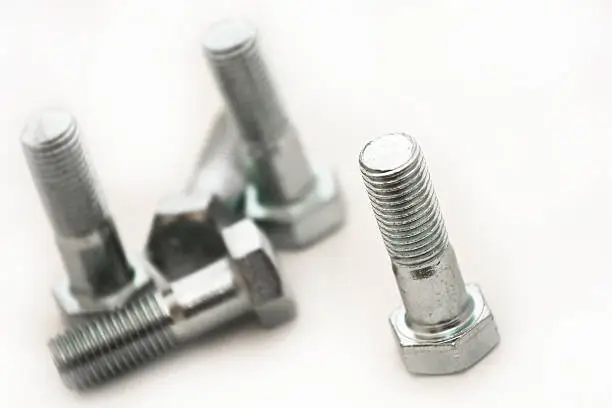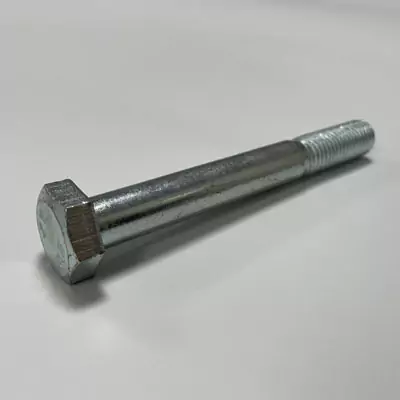caTEGORIES
Tags
How Does a Bolt Hexagonal Head Differ from a Socket Head Bolt?

Posted: November 12, 2024
Categories: News
Select the perfect bolt for your project by understanding the differences between hexagonal head bolts and socket head bolts. Explore the applications of hexagonal head bolts in construction and heavy machinery, and the advantages of socket head bolts in achieving a clean finish and working in confined spaces. Discover Qewit’s range of fasteners designed to meet diverse industrial needs, ensuring reliable performance and efficient installation. Choose the right bolt for your project and achieve successful outcomes.
Understanding Bolt Hexagonal Heads
Definition and Characteristics
The hexagonal head bolt is a fastener known for its six heads that offer a surface, for applying torque effectively and securely using wrenches or pliers when needed for a strong and reliable fit in various applications where durability is crucial under intense pressure due to its well-distributed stress, across the bolt head that minimizes the chances of rounding off.
Applications and Uses
Hexagon-headed bolts see use in the construction industry and automotive sector for their flexibility and robustness in joining components, for both short-term and long-lasting purposes. They are frequently utilized in constructing frameworks and assembling engines or heavy-duty machinery due to their durability which makes them perfect, for supporting loads.
Installation and Tools Required
When you’re putting in a bolt with a head you’ll need tools, like a wrench or socket set that fits the bolt head size exactly right. To install it correctly line up the bolt with the drilled holes in the materials you’re connecting and use the proper tool to tighten it securely for a snug fit. Getting it installed properly ensures that the bolt stays put when under pressure and plays a role, in keeping everything in place as a whole.

Exploring Socket Head Bolts
Definition and Characteristics
Allen bolts or Allen screws are commonly referred to as socket head bolts. Are characterized by a head that contains an internal hexagonal drive socket, within it. This unique design enables these bolts to be seamlessly installed at the level as or, below the surface of materials resulting in a polished appearance. The presence of a drive system allows these bolts to be employed in confined areas where conventional wrenches may not be suitable.
Applications and Uses
Socket head bolts are often utilized in situations where appearance and limited space are considerations. They are commonly seen in assembling furniture items, electronic devices, bicycles, and delicate machinery. Their sleek design makes them ideal, for locations where prominent fasteners could result in blockages or disrupt the movement of components.
Installation and Tools Required
When putting in socket head bolts make sure to use an Allen wrench or hex key that fits snugly into the drive socket. This tool helps you apply torque directly onto the bolt head reducing slippage and allowing for tightening in tight spaces. It’s important to tighten these bolts according to the manufacturer’s guidelines to avoid loosening during use.
To sum up the discussion; bolt hexagonal heads and socket head bolts each have benefits based on your requirements. If you need fasteners, for your tasks maybe check out the selection of products, from Qewit that serve industrial needs.
Comparative Analysis: Hexagonal vs. Socket Head Bolts
Design Differences
The difference, between head bolts and socket head bolts lies in the shape and structure of their heads primarily. The hexagonal head bolts feature a six-head that provides a surface area for applying torque—a beneficial characteristic when a strong grip is required. Standard wrenches or pliers can easily be used with these bolts due to this design feature making them suitable, for use.
Socket head bolts differ by having a head with a drive, inside them instead of the typical flat screwdriver slot head design commonly seen in other types of bolts. These bolts are particularly useful in spaces because their compact design allows them to be installed flush with or below the material’s surface for an inconspicuous look. The use of an Allen wrench or hex key is needed to secure these bolts due, to their drive system. This feature proves beneficial in cramped areas where standard tools may not be able to reach.
Performance in Various Conditions
Hexagonal and socket head bolts exhibit diverse performance outcomes based upon the environment and the unique demands of the application, at hand. Primarily hexagonal head bolts are preferred in settings with tension and stress levels as they excel in dispersing stress across the bolt head rendering them ideal for supporting heavy loads, in construction and heavy machinery contexts.
Socket head bolts are ideal, for situations where looks and saving space are factors to consider. They have a design that reduces obstacles and clashes with moving components making them perfect, for precision tools, gadgetry, and putting together furniture.
Suitability for Specific Applications
Choosing between hexagonal and socket head bolts largely depends on your specific application needs. If your project requires high strength and easy access to installation tools, hexagonal head bolts may be more appropriate. They are commonly used in structural frameworks and engine assemblies where durability is essential.
Alternatively, if your project demands a clean finish with minimal protrusion or involves working in confined spaces, socket head bolts may be more suitable. Their use is prevalent in applications such as bicycle components, electronic devices, and precision equipment.
Recommendations for Choosing the Right Bolt Type
Factors to Consider
When selecting the appropriate bolt type for your project, several factors should be considered to ensure optimal performance:
- Load Requirements: Determine the amount of stress and tension the bolt will need to withstand.
- Space Constraints: Assess whether there is sufficient space for tool access during installation.
- Aesthetic Considerations: Consider whether a flush finish is necessary for your application.
- Environmental Conditions: Evaluate exposure to elements such as moisture or temperature variations that may affect bolt performance.
Insights from Qewit’s Product Line
For those seeking reliable fasteners tailored to diverse industrial needs, Qewit’s product line offers an extensive selection of both hexagonal and socket head bolts designed to meet various specifications. With products engineered for durability and efficiency across multiple industries, Qewit provides solutions that cater to both conventional applications requiring robust fastening systems and specialized projects needing precision engineering.
In summary, understanding your project’s specific requirements will guide you in choosing between hexagonal and socket head bolts effectively. By considering factors such as load capacity, spatial limitations, aesthetic preferences, and environmental conditions alongside exploring offerings from trusted suppliers like Qewit, you select the right fastener type for successful project outcomes.


